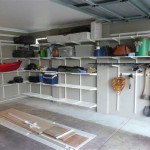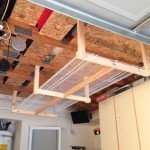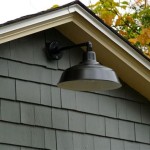How to Fix Uneven Floor Under Garage Door
A garage door that doesn't open and close smoothly can be a frustrating and potentially dangerous problem. One common cause of this issue is an uneven floor under the door. Over time, the concrete floor can settle, crack, or even experience minor shifts due to factors like soil movement, heavy loads, or even temperature fluctuations. An uneven floor can put stress on the tracks, rollers, and other components of the garage door system, leading to difficult operation, noise, and premature wear and tear.
Fortunately, fixing an uneven floor under a garage door is a manageable DIY project for many homeowners with basic construction skills and tools. This article will guide you through the process, outlining the essential steps and considerations to ensure a successful outcome.
Step 1: Assess the Severity of the Unevenness
The first step is to accurately assess the extent of the unevenness. Use a level and a measuring tape to determine the difference in height between the highest and lowest points of the floor under the garage door. This information will determine the best course of action for leveling the floor.
Here's how to assess the unevenness:
- Place a level across the floor: Start by placing a level across the floor along the pathway of the garage door track. Check for any noticeable angles or gaps between the level and the floor.
- Measure the differences in height: If you find unevenness, use a measuring tape to get precise measurements of the differences in height between the highest and lowest points.
- Check the entire track area: Repeat this process along the entire length of the door track to ensure a complete understanding of the unevenness.
Step 2: Determine the Best Repair Method
The appropriate repair method for an uneven floor under a garage door will depend on the severity of the unevenness and the type of floor. The following are common approaches:
- Minor Unevenness: For minor differences in height (less than 1/4-inch), simply filling the low spots with a leveling compound or concrete patching compound might be sufficient.
- Moderate Unevenness: When the unevenness is more pronounced, consider using self-leveling concrete. This material spreads evenly and self-levels, reducing the need for precise pouring techniques.
- Significant Unevenness: For significant unevenness or large cracks, you may need to remove the existing concrete and pour a new slab. This is a more complex and time-consuming approach, but it may be necessary to ensure a solid and level surface.
Step 3: Prepare the Floor for Repair
Before applying any leveling material, it is critical to ensure a clean and dry surface. Follow these steps to prepare the floor:
- Sweep and Clean: Thoroughly clean the floor by sweeping away any dirt, debris, or loose material. You can use a shop vacuum to remove dust and small particles.
- Repair Cracks: Repair any cracks or gaps in the concrete using a concrete crack repair kit or epoxy-based patching compound.
- Prime: Applying a concrete bonding primer ensures a strong bond between the existing concrete and the leveling compound.
Step 4: Apply the Leveling Material
The application process will vary depending on the type of leveling material chosen. Here's a general overview:
- Leveling Compound: Follow the manufacturer's instructions for mixing and applying the compound. Use a trowel or squeegee to spread the compound evenly over the low spots, creating a smooth surface.
- Self-Leveling Concrete: Mix the self-leveling concrete according to the manufacturer's instructions. Pour the mixture onto the floor and allow it to self-level, filling in the low spots and creating a smooth surface.
- New Slab: If you are pouring a new slab, you'll need to create a formwork and pour the concrete according to your local building codes.
Step 5: Allow the Material to Cure
After applying the leveling material, allow it to cure completely according to the manufacturer's instructions. This typically takes 24 to 48 hours. During the curing process, it is essential to prevent any traffic or disturbances on the floor.
Step 6: Test and Adjust if Needed
Once the leveling material has cured, use a level and measuring tape to check the floor for any remaining unevenness. If there are slight inconsistencies, you can apply additional leveling compound or self-leveling concrete as needed. If the unevenness persists, it may indicate a more serious issue and require a professional assessment.
Remember always to wear appropriate safety gear, including eye protection, masks, and gloves, when working with concrete or leveling materials. Also, consult the manufacturer's instructions for specific safety precautions for the products you are using.
By following these steps, you can effectively fix an uneven floor under your garage door and ensure smooth, safe, and quiet operation of your garage door system.

Seal Your Garage Door To An Uneven Floor Spectrum Ohd

Bottom Of Garage Door Not Level Fine Homebuilding

Sealing The Bottom Of An Uneven Garage Door Dura Lift Hardware

Is Your Garage Floor Uneven Mudjacking The Ideal Solution Lift Right Concrete

Fix The Gap At Bottom Of Your Garage Door Spectrum Ohd

Seal Garage Door Bottom From Gaps Rodents

How To Fix Bottom Garage Door Gap

Best Garage Door Seals For Uneven Floors

Fixing Garage Door Gap Uneven Floor

Door Sweep Uneven Floor W Variable Gap Between Opened And Closed Doityourself Com Community Forums
Related Posts








